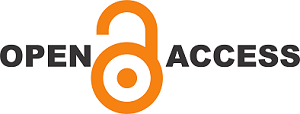DIGITAL TOOLS IN THE STUDY OF ORTHOEPIC ASPECTS OF SINGING
DOI:
https://doi.org/10.31318/2522-4190.2025.143.342820Keywords:
orthoepy, cross-culturality, digital technologies, vocal performanceAbstract
The relevance of the study. The study explores the potential of digital technologies in researching the orthoepic characteristics of vocal performance, with a focus on the intercultural aspect of opera repertoire interpretation. Particular attention is given to the analysis of singing in Italian and German. The research involves the visual representation of vocal material using the Sonic Visualiser software, which allows the construction of spectrograms and identification of the voice’s frequency characteristics in progression. This enables the singer not only to hear but also to see the differences between timbral variants, thus contributing to a more effective acquisition of complex aspects of vocal technique.
The role of vowel sounds is highlighted as the foundation of the singing phrase, conveying orthoepic and timbral expressiveness most fully. Emphasis is placed on the correlation between timbral techniques such as chiaro–scuro, Deckung, and Offene Stimme, their reflection in the frequency range of spectrograms, and their importance in shaping the performer’s interpretive concept.
The necessity of visualizing sound processes is underlined as an additional tool for scientific research and vocal training, facilitating a deeper understanding of the connection between acoustic characteristics and performance technique. The relevance of digital analysis is emphasized not only for research purposes but also as a tool for pronunciation correction, timbre formation, and the development of orthoepic competence in young singers.
The presented study demonstrates a new approach to evaluating the quality of vocal performance, taking into account the factor of approximation to "objective" sound parameters. The focus is placed on the cross-cultural nature of vocal orthoepy, manifested in the specificity of vowel formation according to the phonetic norms of each language. It is established that, regardless of the language of performance, the articulation features of vowels — their width, openness, and resonant position — determine the stylistic and interpretive persuasiveness of the vocal performance. The necessity of considering the orthoepic differences of various vocal schools is emphasized, as this contributes to shaping a precise interpretive concept. An attempt is made to approach the evaluation of vocal performance quality with consideration of objective sound parameters in the intercultural context of vocal art.
The main objective of the study. To indicate the direction of using digital tools in the study of orthoepic aspects of vocal performance.
The methodology. The methodological foundation of the study is based on a comprehensive approach that incorporates methods of acoustic phonetics and spectral analysis through the use of digital tools (Praat, Wavesurfer, Sonic Visualiser, Audacity). The core of the research lies in spectrogram analysis, which enables an objective assessment of the acoustic parameters of the sound signal. The methodology includes the preliminary preparation of audio recordings (isolating the voice from the musical accompaniment, high-quality digital processing of the audio material), segmentation of the recordings into individual fragments for detailed analysis, and the study of the formant structure of vowel sounds and their acoustic characteristics. Comparative-typological and intercultural methods are also employed to identify the specific features of vocal schools, particularly German and Italian.
The main results and conclusions. A promising direction for further research is the application of artificial intelligence to automate the analysis of vocal recordings. Machine learning can recognize vocal patterns and automatically detect typical orthoepic errors, significantly simplifying and accelerating the learning process for vocalists. Additionally, the integration of digital tools into teaching practice should be emphasized. The visualization of vocal sound characteristics enables students to better understand the relationship between the physiology of singing and the acoustic parameters of the voice. Teachers can use the results of such analysis as a tool for correcting their students’ vocal technique. The use of digital technologies also makes it possible to analyze dynamic and timbral changes during vocal performance. For example, tracking variations in intensity and formant frequency can reveal how a singer adapts to complex acoustic conditions in concert halls or recording studios. Such studies can contribute to identifying optimal vocal techniques for different acoustic environments. Thus, the implementation of digital tools and research involving their use allows for greater objectivity and efficiency in vocal training. Future academic explorations may involve the development of new digital tools that combine analytical methods with pedagogical strategies, opening new horizons in vocal performance mastery. A pedagogical response to the issue of timbral variability in vocal delivery requires a combination of traditional methodology with innovative digital tools. The conducted study demonstrates that spectral analysis not only records changes in sound but also transforms abstract categories such as "bright" and "dark" timbre into practically accessible vocal parameters. This significantly enhances the effectiveness of the educational process and ensures a high level of intercultural vocal interpretation.
Downloads
References
Тukova, І. G. (2015). Vizualizaciya formy` muzy`chnogo tvoru (problemy` analizu muzy`ky` drugoyi polovy`ny` XX – pochatku XXI st.) [Visualization of the form of a musical work (problems of analyzing music of the second half of the 20th - early 21st centuries)]. In: Chasopys Natsionalnoi muzychnoi akademii Ukrainy imeni P. I. Chaikovskoho [Journal of Tchaikovsky National Academy of Music]. Issue 3. Kyiv, pp. 115–124 [in Ukrainian].
Ichim, T. The Valuation of the Original Text in an Opera Vocal Score: Meaning and Pronunciation. Available at: https://www.researchgate.net/publication/368346306_The_Valuation_of_the_Original_Text_in_Opera_Vocal_Score_Meaning_and_Pronunciation (accessed: 2.05.2025) [in English].
Luo, Y.-J., Hsu, C.-C., Agres, K., Herremans, D. Singing Voice Conversion with Disentangled Representations of Singer and Vocal Technique Using Variational Autoencoders. Available at: https://arxiv.org/abs/1912.02613 (accessed: 20.04.2025) [in English].
Park, J., Yong, S., Kwon, T., Nam, J. A Real-Time Lyrics Alignment System Using Chroma And Phonetic Features For Classical Vocal Performance. Available at: https://arxiv.org/abs/2401.09200 (accessed: 12.04.2025) [in English].
Downloads
Published
How to Cite
Issue
Section
License
Copyright (c) 2025 Dmytro Kyrychek

This work is licensed under a Creative Commons Attribution 4.0 International License.
Our journal abides by the CREATIVE COMMONS copyright rights and permissions for open access journals.
Authors, who are published in this journal, agree to the following conditions:
The authors reserve the right to authorship of the work and pass the first publication right of this work to the journal under the terms of a Creative Commons Attribution License, which allows others to freely distribute the published research with the obligatory reference to the authors of the original work and the first publication of the work in this journal.
The authors have the right to conclude separate supplement agreements that relate to non-exclusive work distribution in the form in which it has been published by the journal (for example, to upload the work to the online storage of the journal or publish it as part of a monograph), provided that the reference to the first publication of the work in this journal is included.



